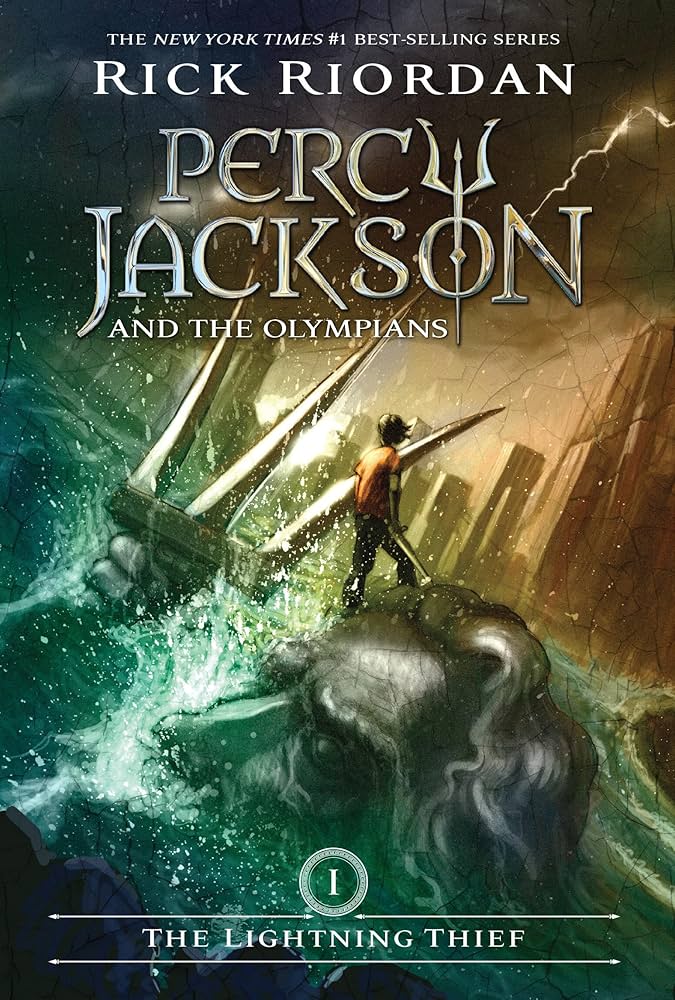Like most young children, I went through various periods of media obsession, including a Disney princess phase and later a Percy Jackson and the Olympians phase. My love of tales like Beauty and the Beast and interest in the aspects of Greek mythology explored in Rick Riordan’s beloved mid-2000s series grew into a long-standing fascination with stories that get retold and reimagined. I always liked to imagine myself as a princess, a heroine in a world of magic, and contemporary retellings of classic tales only made that kind of power and heroism seem more likely. From dressing up as a princess for Halloween just about every year from ages 3 to 10 to taking Buzzfeed quizzes about what Greco-Roman godly parent I would have (Athena, though I answered the very obvious questions with the intention of getting this result), my interest evolved into reading collections of myths and folktales around the world and constantly being disturbed by the non-Disney-ified versions of the classics. My fascination was well-enough known in the family that my nephew, only seven at the time, picked out a book of African folktales for me at a library book sale without my input. Admittedly, he probably just recognized the word “tale” and little else, but I was happy nonetheless.
Besides Percy Jackson, which follows a twelve-year-old boy with a relatively normal life who discovers he’s the descendant of a powerful Greek god, my first encounter with a true retelling was The Lunar Chronicles. Marissa Meyer’s series puts a science fiction spin on the stories of Cinderella, Little Red Riding Hood, Rapunzel, and Snow White that features cyborgs, a lunar plague spread to Earth, genetically modified soldiers, and a civilization on the moon, while keeping the original bones of the stories. I devoured these books the summer before 8th grade, and haven’t stopped picking up fairytale, folktale, or mythological retellings since. Luckily, this has been easy enough to manage, because it seems I’m not the only one with this interest. Fairytale and mythological retellings have become something of a commercial and literary subgenre, ranging from close retellings to stories that draw loose inspiration from mythos and lore.
@bnplymouthmtg This is our current mythology display in store! #bookselling204 #barnesandnoble #books #booktok #booksellers #bookseller #endcap #mythology
There are several think pieces on why retellings have seen a resurgence (many of which reference Percy Jackson), particularly in young adult books. There seems to be a general consensus that we know and remember these stories for a reason, so of course they’re being retold and reworked–they always have been. Myths, legends, and folk tales are about people: our successes and our failures, our strengths and our flaws, the complexities of living in a world full of other imperfect people. Author and professor Sheila Kohler, who has degrees in literature and psychology, writes about the importance of fairytales for Psychology Today: “The child can identify with the small, the weak or the downtrodden who, in a gratifying reversal, is able to overcome the odds and triumph.” This fits well with my own experience–I’m the youngest, and was a very small and shy child prone to anxiety. What better way to boost my confidence and develop my sense of self than stories about people overcoming barriers that were (arguably) far scarier than social interaction? As Kohler suggests, we tell these stories to better understand ourselves and confront the world around us.
Moreover, as humanity and the world change, it seems natural that these stories will be adapted, altered, and even challenged. Many modern retellings explore classic stories through a feminist angle (Circe by Madeleine Miller, which gives the minor goddess/sorceress a story beyond her mentions in the Odyssey), include LGBTQIA+ characters (Cinderella is Dead by Kalynn Bayron, which involves what’s essentially a deadly version of The Bachelor), feature more diverse casts, from exclusively European tales (Daughter of the Moon Goddess by Sue Lynn Tand on the story of the Chinese moon goddess Change’e), or explore how stories are told and what’s left out of the canon (The Legendborn Cycle by Tracy Deonn, which features a powerful secret society of descendants of the Round Table built on racist and misogynistic principles).
In something of the same spirit, retellings of classic literature have also become popular, in the worlds of both books and film–think 10 Things I Hate About You, an admittedly loose retelling of Shakespeare’s The Taming of the Shrew, or Barbara Kingsolver’s Pulitzer prize-winning novel Demon Copperhead, a modern retelling of Charles Dickens’ David Copperfield. Like retellings of fairytales and mythology, modern twists on classic literature range in their loyalty to the original story, often taking place in more modern or different settings. After being exposed to more classics in high school, I noticed many of these stories having an almost mythical quality to them, as they are also constantly referenced in media and everyday life, from the Disney channel (an episode of Jessie called “Green Eyed Monsters”) to Taylor Swift songs (references to The Great Gatsby in the “happiness”). While I kept reading myth and fairytale retellings, I found myself interested in how the classics could be reworked for a more modern audience, with the same motivation of self-understanding as retellings of myths and fairytales. My first classic literature retelling experience was with Chloe Gong’s Romeo & Juliet retelling of rival gang heirs in 1920s Shanghai (These Violent Delights)…though Shakespeare’s famous play itself can be traced through Arthur Brooke’s The Tragicall Historye of Romeus and Juliet and Matteo Bandello’s Romeo e Giulietta, all the way back to the Greek myth of Pyramus and Thisbe. Ironically, I’m not a huge fan of Romeo & Juliet, but I’ve always appreciated its role in cementing the star-crossed lovers trope and was intrigued by how the framework of the story could be applied to such a different setting. These Violent Delights quickly became one of my favorite series, and exposure to the retelling made me more fond of the original story. A more recent retelling, The Initial Insult duology by Mindy McGinnis, is a modern play on Poe’s “The Cask of Amontillado” and “The Tell-Tale Heart” about two teen girls whose childhood friendship was ended by betrayal, set in a fictional Ohio town. Though I find some of Edgar Allan Poe’s life choices to be very questionable (if you’re curious, look up his marriage), the dark and haunting atmosphere of his short stories has always been intriguing to me, and McGinnis’ duology does a great job incorporating it in a modern and conveniently local setting. Classic literature is retold for the same reason as folklore and mythology–that is, the survival of these stories as portrayals of humanity. Additionally, these retellings tend to make the classics seem more relatable to modern audiences.
Naturally, I’ve decided to include a short list of some of my favorite retellings and reimaginings, a few of which I believe are vastly underhyped:
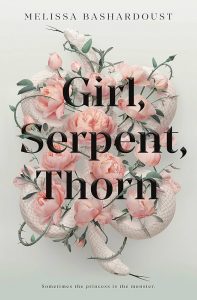
Girl, Serpent, Thorn by Melissa Barshardoust blends Sleeping Beauty and Persian mythology in a story about a princess with poison skin, and her discovery of the power that may lie in what she believed to be a curse.
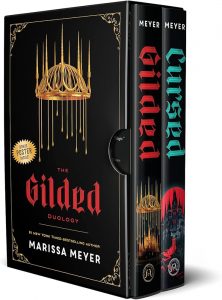
Marissa Meyer’s Gilded duology is a dark Rumplestiltskin retelling steeped in Germanic folklore, following a storytelling miller’s daughter whose tales catch the attention of the dreaded Erlking.
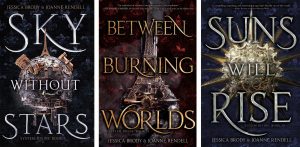
The System Divine, coauthored by Joann Rendell and Jessica Brody, is essentially Les Misérables in space, tackling the same class divide and corrupt penal system in a reimagined setting.
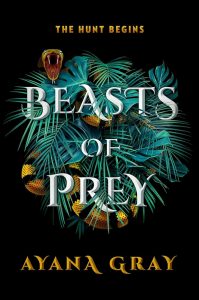
Ayana Gray’s Beasts of Prey trilogy includes a variety of Pan-African mythology and folklore in a story full of magic, betrayal, and religious government corruption, featuring an indentured magical zookeeper and an elite warrior working together to hunt down a legendary beast.

The Haunting of Alejandra by V. Castro is a story of generational trauma, depression, and motherhood. The protagonist is haunted by La Llorona, the Mexican legend of a white-clad woman wandering and weeping after she drowned her children, and discovers a history of related family tragedy.
Regardless of whether you share my love of old tales and their modern counterparts, I think there’s value in recognizing these stories’ longevity. Humanity is constantly changing, but at the center of it all is our need to understand each other, to understand ourselves. What are fairytales and myths if not a mirror and a window? As humanity persists and changes, so too do our stories.

